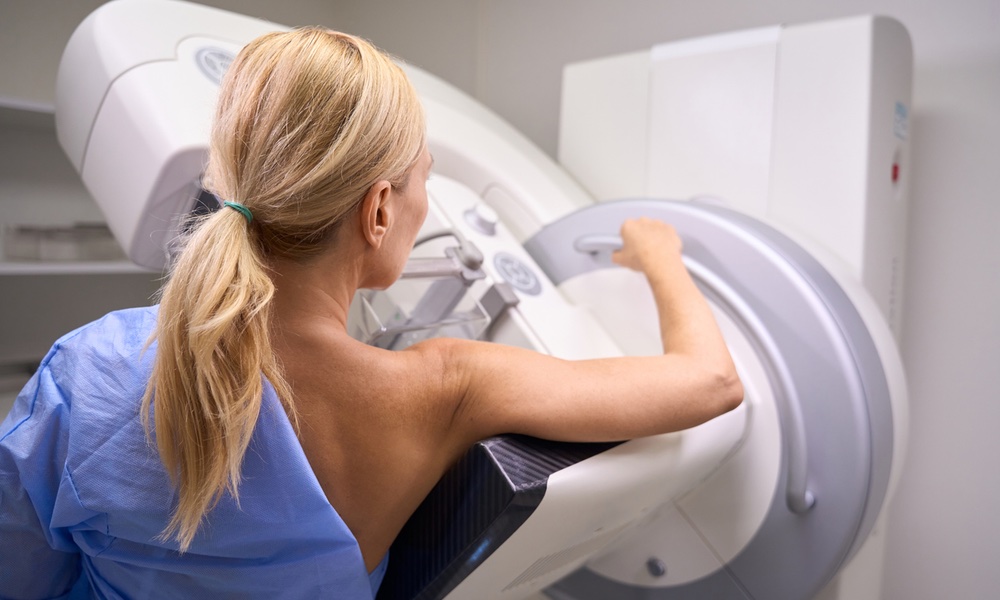Even though the causes of the inflammatory bowel diseases (IBDs) remain unknown, a great deal of effort has been devoted to clinical trials of newer forms of anti-inflammatory and immunosuppressant drugs in the last few years.
If, because of a distinct change in bowel habits, you suspect you might have this disease, the most useful way for the doctor to make the diagnosis and treat IBD will begin with a detailed discussion. More than most intestinal or colonic conditions, a careful and thorough approach, either in the physician's office or at the hospital bedside, often provides the special insight necessary to the correct diagnosis and proper therapy.
Frequency and Quantity of Stool Output
The normal range of stool pattern varies from one passage every other day to two to three per day. When this pattern changes for a particular individual, both you and your physician should become concerned. Patients with an increase in the number and amount of stool passages, without substantial fever or constitutional symptoms, can be followed for a week or so before proceeding with a comprehensive evaluation.
For short-term, so-called acute episodes, it is usually not possible to determine the cause but this does not affect the outcome. Many acute intestinal infections by bacteria or viruses are self-limiting and do not require drug therapy. In fact, sometimes treating them may actually worsen the situation because some medications promote the growth of other microscopic organisms, such as Clostridium difficili, which itself produces a toxin that causes diarrhea and, occasionally, even a kind of temporary inflammation of the large intestine.
When the change in stool excretion persists for longer than seven to ten days, an evaluation is in order. Freshly collected stool should be submitted or properly preserved for analysis for ova and parasites. Bacterial culture for common offenders, such as Salmonella, Shigella, Campylobacter jejuni and special strains of E. coli, is recommended. If persistent diarrhea is caused by one of these organisms, appropriate antibiotic or antiparasitic therapy is indicated.Many acute intestinal infections by bacteria or viruses are self-limiting and do not require drug therapy.
When No Common Infection Is Found and Diarrhea Persists
If your stool analyses are negative and the diarrhea has persisted for more than one week, further evaluation is necessary. It is not advisable to take bowel-slowing agents such as diphenoxylate-atropine (Lomotil®) or loperamide (Immodium®) or get a prescription for tincture of opium at this stage, but, instead, you need to see your doctor and schedule an internal exam of your lower bowel. A sigmoidoscopy with a flexible fiberoptic endoscope allows the doctor to see the rectum and sigmoid colon. If the doctor notices that the surface pattern of the colon is altered, a biopsy will be taken, the surfaces swabbed for ova and parasites and all specimens sent to the laboratory.
When Biopsies Are Always Needed
Patients who have had prolonged, unexplained diarrhea, what we call chronic inflammation, may need a biopsy. Weakened patents, the elderly, those with a suppressed immune system from a disease such as AIDS, or patients who have been taking high dosage coriticosteriods, azathioprine or cyclosporin to maintain a transplanted bone marrow or solid organ, should have stool and biopsy specimens submitted.
In the portion of patients in whom the loose stools persist, even though the laboratory cannot find an infectious cause, chronic conditions of the colon and small intestine must then be considered. At this point, further examination of the remainder of the colon, either with a barium enema contrast X-ray series or a complete colonoscopy and a small intestinal contrast exam, may be indicated.
Two Inflammatory Bowel diseases (IBDs) and a New Mimicker
When the excessive stool output persists and no acute infection is identified, the inflammatory bowel diseases (IBDs), ulcerative colitis (UC) and granulomatous ileo-colitis (Crohn's disease), are usually considered. Most doctors are involved in the initial evaluation and diagnosis but the therapy, often complex, usually requires the expertise of specialists, gastroenterologists and, in some instances, general surgeons, at least at the beginning of treatment.
An increase in the frequency and volume of stools occurs in both types of IBD and passage of blood is the rule in ulcerative colitis. Typical early symptoms pointing to IBD include constipation and blood coating of solid stool in ulcerative colitis, as well as an aggravating, constant, deep-seated, severe aching pain, which is often described by patients as having the quality of a toothache, in active Crohn's disease. The "toothache" pain of Crohn's disease may occur in the absence of definite changes in stool habits.
Ulcerative Colitis (UC)
At the outset, most patients with UC will note only the local symptoms of lower abdominal cramping, rectal urgency and multiple passages of mucus and blood, often with scanty quantities of actual stool. The physician must ask you probing questions: "How many times per day do you actually need to relieve yourself by attempting to pass a BM? What is the quantity and character of the material passed?" The diagnosis can be made definitively only after infectious causes have been eliminated, there are changes in the colon's appearance grossly and microscopically and when drug therapy improves the patient's condition.
Treatment
For most patients with UC, local colonic symptoms related to the inflammation are treated with slow-release 5-aminosalicylic acid (5-ASA) enemas (Asacol®l, Pentasa®) and systemic therapy with sulfasalazine or 5-ASA.2,3 Systemic corticosteroid treatment should be reserved for patients who have constitutional or systemic symptoms such as anorexia, fatigue, an increased sleep requirement and weight loss. Many doctors are very reluctant to prescribe antidiarrheal agents because of the fear of tripping off a severe attack of colitis (fulminant colitis and toxic megacolon). But the actual increase in risk of such a dire complication is very low and the most disturbing symptoms are likely to be the abdominal cramping and rectal urgency, requiring many trips to the bathroom. I recommend antidiarrheal agents routinely when patients have a colitis flare. Although the OTC preparations such as Lomotil®) and Immodium®) are frequently prescribed, tincture of opium is considerably more effective in controlling the cramping, urgency and multiple stools.
Prognosis
UC is usually a recurrent illness and progression from a local flare-up to involvement of the entire colon is not unusual. Despite the fact that many patients can be treated satisfactorily and stay in remission for long periods of many months or years, recurrent activity and extension to other segments of colon warrant initiation of regular colonoscopic exams for the increased risk of cancerous change which becomes significant after eight years of disease. If the doctor finds "dysplasia," abnormal changes in the cells lining the colon's surface, or adenomatous polyps, surgical removal of the entire colon (colectomy) will be necessary. Partial removal has no role in the treatment of UC because of the common recurrence in even a small segment of residual colon can lead to a full-blown recurrence of colitis.
Crohn's Disease
Although some patients experience rectal bleeding with Crohn's colitis, most report passage of increased amounts of loose stools, with or without abdominal pain. If a patient has only chronic pain, but no diarrhea, the cause may still be Crohn's disease, but of the small intestine or the right colon. Crohn's disease produces chronic inflammation of the entire bowel width, including the muscle layers and the deeper tissues. Crohn's disease can effect any part of the colon, an upside-down U-shaped organ, divided into three parts (right colon, transverse or connecting colon, left colon). In Crohn's disease, surgery is often required to relieve some of the complications (e.g., obstruction) but, unlike UC, surgical cure may not be achieved because the inflammation, especially at the site of surgical repair, is likely to recur.
Crohn's disease can effect any part of the colon...
Evolution of Therapy of UC and Crohn's Disease
The general physician is often reluctant to initiate systemic steroids for patients with the inflammatory bowel diseases and it is advisable to obtain the opinion of a specialist, a gastroenterologist, when the disease is first discovered or when the treatment proves unsatisfactory in an established case. As noted above, local therapy is indicated when typical symptoms of cramping abdominal pain, urgency and an increased requirement for passage of stools occur. For patients in whom the symptoms extend beyond the bowel to generalized constitutional effects, such as bodily fatigue, anorexia, increased sleep requirement, severe joint pain or arthritis and weight loss, then systemic therapy with high-dose corticosteroids is indicated.
There are a variety of approaches to corticosteroid therapy. Short courses, of 10-14 days, and rapid tapering over a similar period of time are usually met with an abrupt recurrence of symptoms that is discouraging to both the doctor and the patient. Prednisone or prednisolone, the glucocorticoids most commonly chosen for oral administration, should be administered for at least three to four weeks, and often longer, until the patient's systemic symptoms have abated substantially. The persistence of passage of multiple stools may continue even when the patient's constitutional symptoms are under control, and the local bowel symptoms often require the addition of antidiarrheal therapy. Tapering of the steroid dosage should be slow, decreasing the original dose by a small amount each week. Often, it is necessary if the patient suffers a relapse to re-institute a higher steroid dosage and, then, to begin tapering again when there is evidence of a remission, based on the patient's sense of well being and the absence of significant symptoms.
Because of this difficulty in preventing recurrences and in order to avoid dependence on long-term corticosteroids, newer helper ("adjuvant") drugs have been recommended in the last few years because they often maintain the remission and allow steroids to be discontinued. The antimetabolites 6-mercaptopurine (Purinethol®) and its analog, azathioprine (Imuran®), both chemotherapy agents, have been demonstrated to provide incremental advantage over corticosteroids alone, especially when it is difficult to taper the steroids because of continuing systemic symptoms. The onset of a beneficial effect usually requires at least 30 days and often longer — thus, the antimetabolites will need to be administered for many months and often for a year or longer. They are useful both in lowering the steroid dosage and in maintaining the remission from the colitis.
Guidelines for therapy of the IBD's, based on the extent and severity of the disease, are provided in Table 1 below.
Table I.
Category of IBD as a Basis for Therapy
| Severity | |||
|---|---|---|---|
| Mild | Moderate | Severe | |
| Symptoms | Local only (cramping tenemus) 3-6 stools/day |
Prominent cramps, borderline fatigue 6-10 stools/day |
Fatuigue, anorexia, weight loss, sleep requirement >10 stools/day |
| Apathy, muscle wasting General abd. tenderness Extracolonic signs |
|||
| Laboratory Tests | Usually normal ESR > 25 (in minority) |
Hct 35 to normal; WBC nl ESR > 25; Alb > 3.5 |
Hct < 30 to 35; WBC > 15K ESR > 30; Alb < 3.0; Often Alk.Phos. |
| Colonoscopy | Frialbiality; granularity; visible ulcers (Crohn's) | Distortion, very friable; large ulcers (Crohn's) | Universal involvement; marked mucosa distortion Pseudopolyps |
| X-ray Image (BE/CT) |
Segmental or distal disease | Usually 50% of colon involved Often mural thickening |
Total colon involved Mural thickening |
| Therapy2 | Sulfasalazine 2-4 Gm/d 5-ASA enemas for distal disease |
Usually same as for Mild Prednisone 20 mg/day, if no response to local Rx |
NPO; i.v. fluids Prednisone 40-80 mg/d Cyclosporin 4 mg/day i.v.x4d; then 8 mg/day p.o. Colectomy if no response by 48 hrs |
Typical common findings but not present uniformly in each category
Sulfasalazine enhances the chance of remission and is particularly useful in prophylaxis against recurrent attacks of UC; it is preferred to other 5-ASA-containing compounds, but, in patients with side-effects to the sulfa component of the drug, Asacol® or Pentasa7reg; may be substituted. Prednisolone may be used rather than prednisone at a dosage of 0.8X that of the prednisone. Azathioprine (Imuran®) or 6-mercaptopurine (Purinethol®),although useful in promoting withdrawal of corticosteroids in patients who require the steroids over months to maintain aremission, are not beneficial for acute flares.
Sulfasalazine enhances the chance of remission and is particularly useful in prophylaxis against recurrent attacks of UC; it is preferred to other 5-ASA-containing compounds, but, in patients with side-effects to the sulfa component of the drug, Asacol® or Pentasa7reg; may be substituted. Prednisolone may be used rather than prednisone at a dosage of 0.8X that of the prednisone. Azathioprine (Imuran®) or 6-mercaptopurine (Purinethol®),although useful in promoting withdrawal of corticosteroids in patients who require the steroids over months to maintain aremission, are not beneficial for acute flares.
The New Common Mimicker: Cytomegalovirus (CMV) Colitis
CMV is a very prevalent viral agent that exists in the tissues of many healthy individuals, usually in a dormant state. However, people who have a compromise of their T-cell function as part of AIDS, bone marrow and solid organ transplantation and lymphomas can suffer from an abnormal spread of CMV to many organs. CMV is particularly prone to attack the lungs and an ulcerative esophagitis (inflammation of the esophagus) and a colitis have now surfaced as a serious manifestation of CMV infections in the immunocompromised patient.
The widespread occurrence of AIDS and the increasing use of immunosuppressant agents in patients receiving organ transplants has facilitated the emergence of CMV as a major pathogen. CMV produces a colitis in as many as 10 percent of AIDS patients. Crohn's disease is often mistakenly diagnosed, often with disastrous results if steroid therapy is initiated for presumed IBD when CMV is the actual culprit because steroids will worsen the CMV infection. On X-ray, the virus may also produce a mass effect in the colon, similar to that produced by a cancerous growth.
CMV must be considered in the patient in whom various defense mechanisms are compromised who develops colonic ulcerations. Biopsies from the margins and base of the colonic ulcerative lesions often can be cultured in the lab to reveal CMV's presence. Therapy with ganciclovir (Cytovene®) is often effective in treatment and foscarnet (Foscavir®) should be given when the patient fails to respond to ganciclovir.




